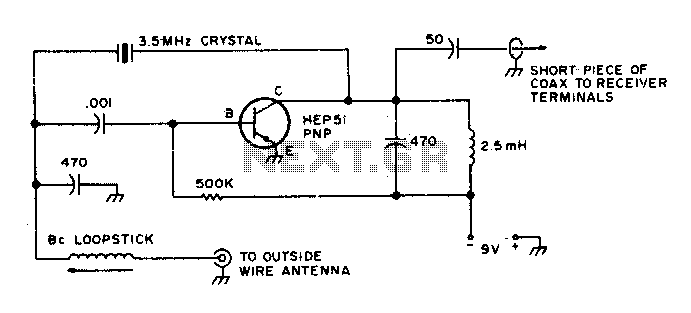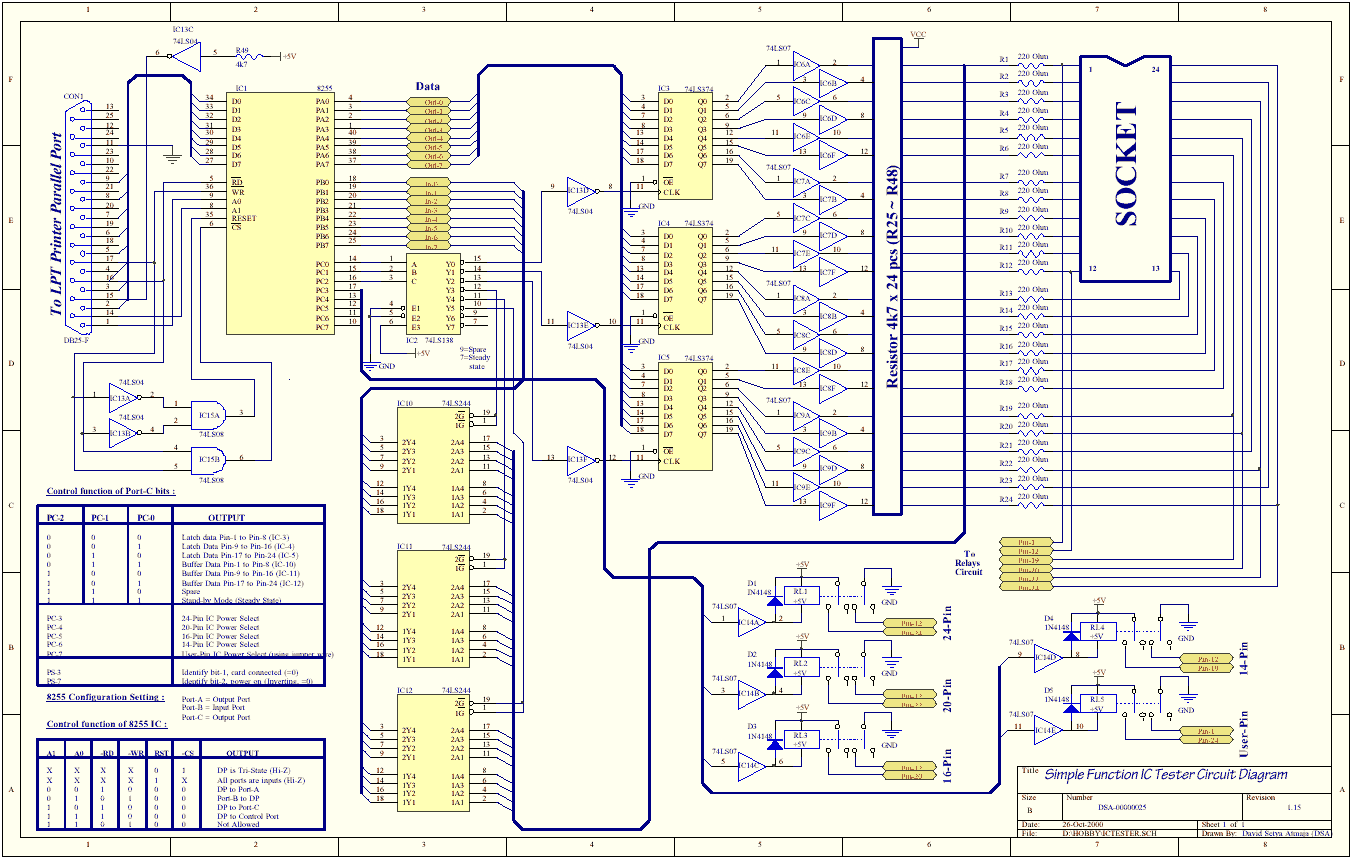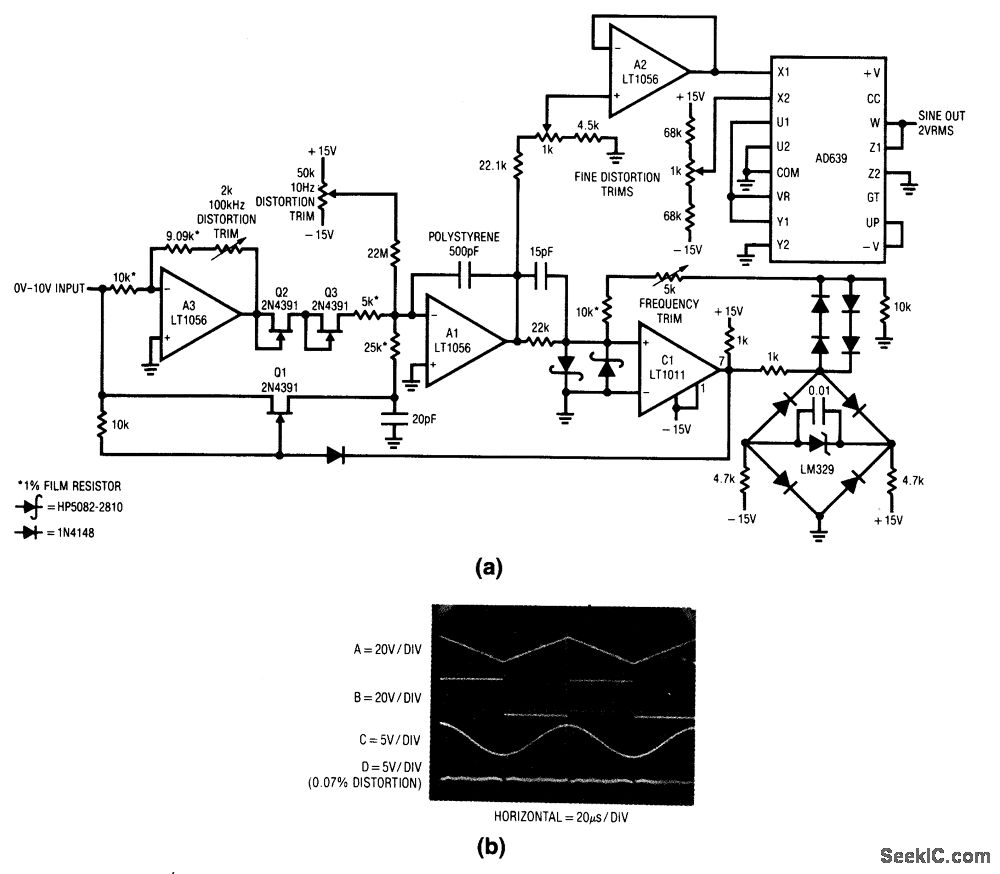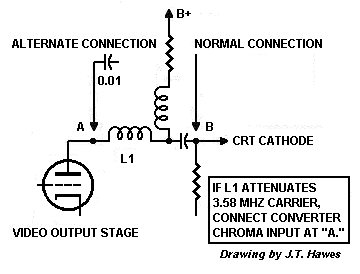
Simple LF converter

This converter provides frequency coverage from 25 kHz to 500 kHz. It is recommended to use a short coaxial cable to connect the converter to the receiver's antenna input. To operate, tune the receiver to 3 MHz, adjust for the loudest signal from the crystal calibrator, and then increase the receiver frequency to access the 100 kHz range. Tuning to 3 MHz corresponds to 200 kHz, while 3 MHz also equals 300 kHz, and at 3 MHz, it yields 500 kHz. Tuning to 4 MHz results in 500 kHz.
The described converter is designed to facilitate the reception of signals within a specified frequency range, specifically from 25 kHz to 500 kHz. The use of a short coaxial cable is crucial for minimizing signal loss and ensuring optimal performance when connecting the converter to the receiver's antenna input.
To effectively utilize the converter, the user must set the receiver to a frequency of 3 MHz. This initial setting allows the user to calibrate the receiver by adjusting for the strongest signal from a crystal calibrator, which serves as a reference point. Following this calibration, the user can then incrementally tune the receiver to higher frequencies, which correspond to specific lower frequency ranges. For instance, maintaining the receiver at 3 MHz aligns with a 200 kHz output, while further adjustments will yield 300 kHz and 500 kHz outputs. Notably, tuning the receiver to 4 MHz also provides a 500 kHz output, showcasing the versatility of the converter in accessing multiple frequency ranges with a single tuning adjustment.
This operational method highlights the importance of precise tuning and calibration in achieving effective signal reception across the defined frequency spectrum. The converter's design and recommended operational procedures ensure that users can efficiently access and utilize the lower frequency ranges for various applications, such as communication or signal analysis.This converter allows coverage from 25 kHz up to 500 kHz. Use short coax from the converter to receiver antenna input Tune the receiver to 3 MHz, peak for loudest crystal calibrator and tune your receiver higher in frequency to 3 MHz and you"re tuning the 100 kHz range. 3 MHz puts you at 200 kHz, 3 MHz equals 300 kHz, 3 MHz yields 500 kHz, and 4 MHz gives you 500 kHz.
The described converter is designed to facilitate the reception of signals within a specified frequency range, specifically from 25 kHz to 500 kHz. The use of a short coaxial cable is crucial for minimizing signal loss and ensuring optimal performance when connecting the converter to the receiver's antenna input.
To effectively utilize the converter, the user must set the receiver to a frequency of 3 MHz. This initial setting allows the user to calibrate the receiver by adjusting for the strongest signal from a crystal calibrator, which serves as a reference point. Following this calibration, the user can then incrementally tune the receiver to higher frequencies, which correspond to specific lower frequency ranges. For instance, maintaining the receiver at 3 MHz aligns with a 200 kHz output, while further adjustments will yield 300 kHz and 500 kHz outputs. Notably, tuning the receiver to 4 MHz also provides a 500 kHz output, showcasing the versatility of the converter in accessing multiple frequency ranges with a single tuning adjustment.
This operational method highlights the importance of precise tuning and calibration in achieving effective signal reception across the defined frequency spectrum. The converter's design and recommended operational procedures ensure that users can efficiently access and utilize the lower frequency ranges for various applications, such as communication or signal analysis.This converter allows coverage from 25 kHz up to 500 kHz. Use short coax from the converter to receiver antenna input Tune the receiver to 3 MHz, peak for loudest crystal calibrator and tune your receiver higher in frequency to 3 MHz and you"re tuning the 100 kHz range. 3 MHz puts you at 200 kHz, 3 MHz equals 300 kHz, 3 MHz yields 500 kHz, and 4 MHz gives you 500 kHz.





